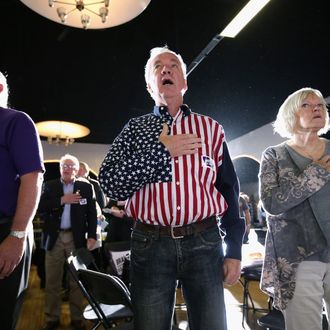
What people fear, and how much they fear it, matters a lot. To a certain extent, that’s how we organize society, after all — we don’t make laws or base political campaigns on problems that no one is worried about. Terrorism is a prime example: Since September 11, fears of terrorist attacks have been a big part of the national consciousness. But what factors determine how much people respond to these threats? Are there ways to blunt the impact of these sorts of fears when they’re overblown? A new study in the Journal of Applied Social Psychology offers an enticing hint.
The author, Rezarta Bilali of New York University, asked a sample of university students to fill out some questionnaires designed to gauge how homogeneous they found their in-group (is everyone in their community similar in key ways, in other words, or are there important differences?), and to what extent they identified with it. Then, two or three months later, the students were asked to read one of three different articles — two related to U.S. security against terrorist threats, and a control article about “Healthy Forests for a Healthy Nation — and then to fill out yet more questionnaires designed to measure how threatened they felt by the threat of a terror attack.
The most interesting finding was that the more people felt their in-group was homogeneous, the less they were affected by information meant to heighten their perceived risk of a terror attack. One possibility, albeit one this study wasn’t designed to explicitly test, was that, as past research has suggested, “homogeneous in-groups are perceived as more capable to defend themselves and to cope with out-group threats.” In other words, there’s more of a sense of everyone being on the same “team,” and therefore less reason to fear for the group’s safety and integrity.
As Bilali points out, a lot more research is needed to better understand how people respond to threats. And given that the United States is both quite diverse (that is, heterogeneous) and perceived as a prime target for terrorist attacks, this is important stuff to unpack.




